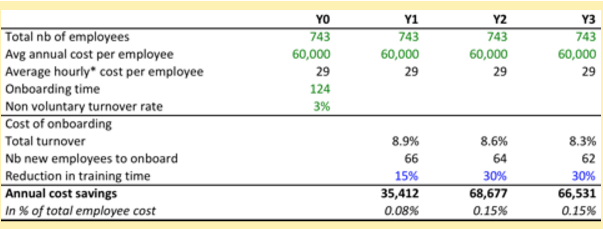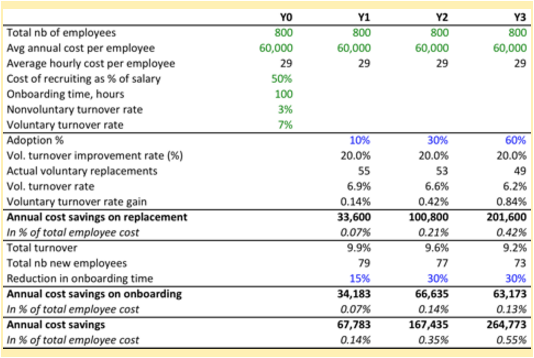- Veronika Mazour
- April 6, 2016
Making money with your Intranet: Employee Turnover

Content
Turnover is a costly issue
Top HR challenge
How a digital workplace helps with voluntary turnover
- Relationship with management, from employee recognition to company goal communication
- Work environment, e.g., teamwork, communication, and collaboration between departments
- Career development opportunities, e.g., career advancement, training, and personal development
- Introduce policy transparency so your employees perceive your compensation and benefits as fair
- Allow greater flexibility in the work/life balance and environment through efficient communication, collaboration, and productivity tools
- Improve corporate communications to help foster a sense of financial security and job alignment with company goals
- Improve employee recognition by management
- Promote a dynamic work environment via teamwork and communication flows
- Offer career paths via networking and promotion opportunities
Making money from improved turnover

Intranet effect on onboarding and training

How much money would you make?
Estimate your current costs
Take assumptions
Calculate your savings

Digital Workplace FAQs
What is a digital workplace?
A digital workplace is a next generation of intranet solutions or intranet 2.0 that is based on three pillars: communication, collaboration and information. In a way this definition is true but it doesn’t cover the whole spectrum of the term. Here are some definitions of digital workplace:
- An evolution of the intranet
- A user centric digital experience
What is an intranet?
intranet is a term used with abundance whenever the subject of internal communication and collaboration is brought up which makes defining it a bit challenging. In its simplest form, an intranet is an internal website for your organization. It is used mainly for top-down communication where employees can access corporate news, policies and announcements.
What is collaboration?
Collaboration is “the situation of two or more people working together to create or achieve the same thing”.
What are the different types of collaboration in business?
Here are some definitions of digital workplace:
- Team collaboration
- Cross-departmental and interdisciplinary collaboration
- Community collaboration
- Strategic partnerships and alliances
- Supply chain collaboration
What are the different types of intranet solutions?
To gather a thorough understanding of intranets and their different types, let’s walk through its history from the early days up to now:
- Intranet Portals
- Enterprise Social Netwrok (ESN)
- Intranet 2.0
What is the difference between intranets and extranets?
The main difference between intranets and extranets lays in the target audience. Intranets typically target users from a specific organization whereas extranets is the hub that can group users from multiple external organizations ranging from partners and suppliers all the way to clients
➝ Discover the real difference between intranet and extranet
What are the benefits of intranet solutions?
Different types of Intranet solutions from the early days up to the intranet 2.0 (commonly referred to as digital workplace solutions) bring a host of benefits to businesses of all sizes and industries. Below is a list of benefits often associated with intranets:
- Streamline internal communications
- Connect employees and eliminate silos
- Foster collaboration
- Improve knowledge sharing
- Recognize and reward employees
What are the different strategies for a successful intranet adoption?
Here are three different strategies for a successful intranet adoption:
- User focus strategy
- Global community management strategy
- Private communities focus strategy
- Tags: Digital workplace, intranet, Tips & Tricks
Related posts
- All
- eXo
- Digital workplace
- Employee engagement
- Open source
- Future of work
- Internal communication
- Collaboration
- News
- intranet
- workplace
- Knowledge management
- Employee experience
- Employee productivity
- onboarding
- Employee recognition
- Change management
- Cartoon
- Digital transformation
- Infographic
- Remote work
- Industry trends
- Product News
- Thought leadership
- Tips & Tricks
- Tutorial
- Uncategorized
Leave a Reply
( Your e-mail address will not be published)


